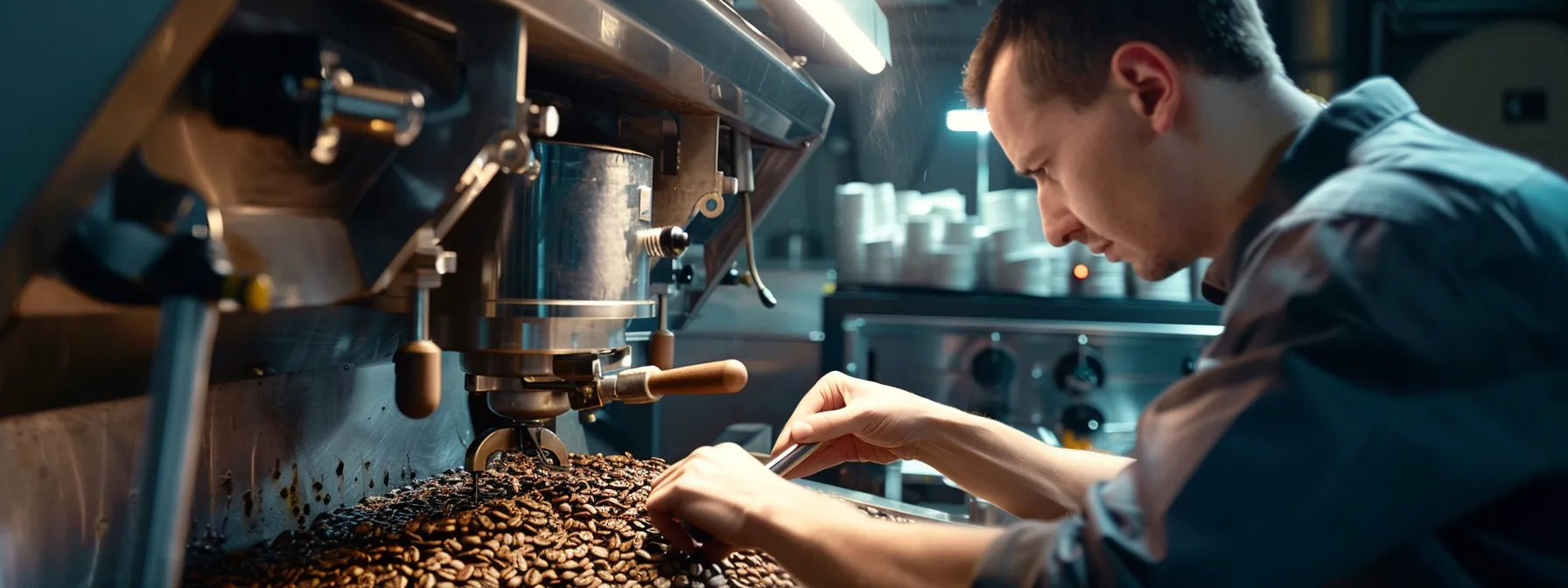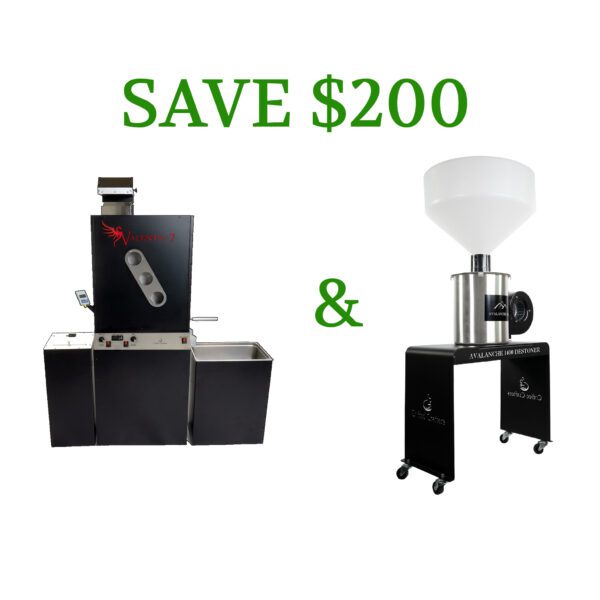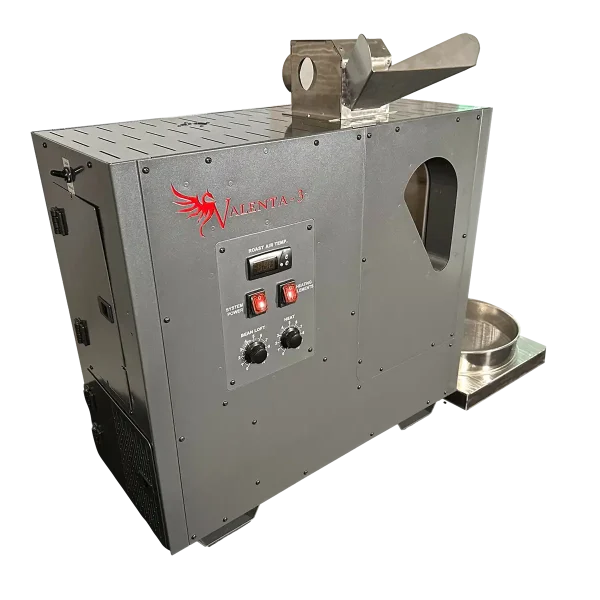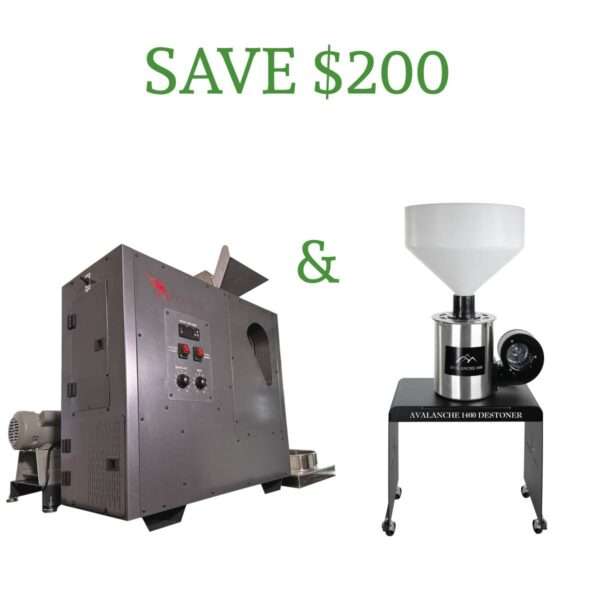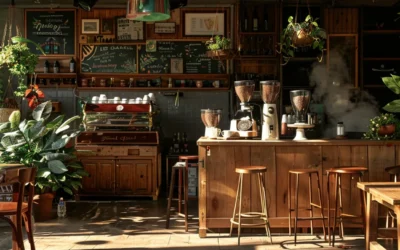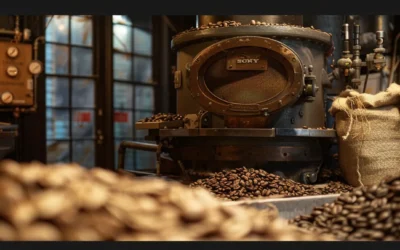Table Of Contents:
- Selecting the Ideal Commercial Coffee Roaster for Your Small Business
- Key Takeaways
- Understanding Your Business Needs for a Coffee Roaster
- Assessing Your Current Coffee Output Requirements
- Forecasting Future Business Growth and Roasting Demand
- Identifying the Types of Coffee Your Business Will Roast
- Navigating Through Types of Commercial Coffee Roasters
- Drum vs. Air Roasters – Pros and Cons
- Automation Level – Manual, Semi-Automatic, or Fully Automatic
- Size and Capacity Options for Small Businesses
- The Importance of Roast Quality and Consistency
- Evaluating Roaster Technology for Consistent Roast Profiles
- The Role of Software and Programmability in Quality Control
- Evaluating the Space and Ventilation Requirements
- Space Planning for Your Coffee Roasting Area
- Understanding Ventilation Needs and Solutions
- Budgeting for Your Commercial Coffee Roaster
- Upfront Costs vs. Long-Term Value
- Financing Options and Considerations for Small Businesses
- The Significance of Energy Efficiency and Sustainability
- Energy Consumption of Different Roaster Types
- Sustainable Roasting Practices and Their Business Impact
- Warranty, Maintenance, and Support Essentials
- Comparing Warranty Policies and What They Cover
- Maintenance Needs and Support Services Availability
- Reading Reviews and Seeking Recommendations
- Finding and Interpreting Reviews From Other Small Business Owners
- Leveraging Coffee Roasting Community Insights and Experiences
- Preparing for Installation and Training
- What to Expect During the Installation Process
- Training Options for You and Your Team on Using the Roaster
- Conclusion
Selecting the Ideal Commercial Coffee Roaster for Your Small Business
Selecting the ideal commercial coffee roaster for your small business is a crucial decision that can significantly impact your coffee’s quality and your operation’s efficiency. Coffee roasters are the heart of any roasting business, transforming green beans into aromatic espresso and other coffee varieties through precise heat application. The right roaster can elevate your coffee roasting process, ensuring consistency and flavor that will set your products apart. In this article, we’ll explore the key factors to consider when choosing a commercial coffee roaster, from understanding your business needs to evaluating space requirements and navigating incoterms for international purchases. Keep reading to discover how to make an informed decision that will benefit your small business for years to come.
Key Takeaways
- Carefully evaluate business needs and future growth when selecting a commercial coffee roaster
- Consider roaster size, technology features, and automation level for consistent quality and efficiency
- Assess spatial requirements, ventilation needs, and energy efficiency for optimal roasting environment
- Explore financing options and compare warranty coverage to ensure a sound investment
- Seek real-world experiences and community insights to make an informed decision on roaster selection
Understanding Your Business Needs for a Coffee Roaster

When selecting a commercial coffee roaster, I must carefully evaluate my business needs to ensure the machine aligns with my current operations and future goals. This involves assessing my current coffee output requirements, forecasting future growth in roasting demand, and identifying the types of coffee beans I’ll be working with. By considering these factors, I can choose a roaster that not only meets my immediate needs but also supports my long-term business objectives. Whether I’m planning to supply beans for espresso machines or create unique blends for advertising purposes, understanding my specific requirements is crucial for making an informed decision on the right coffee roasting equipment.
Assessing Your Current Coffee Output Requirements
I start by calculating my daily roasting volume to determine the appropriate roaster size. This involves considering factors like heat transfer efficiency, which affects both roasting quality and electricity consumption. I also factor in the price of different roaster models, balancing my budget with the features I need.
For my artisan coffee business, I consider whether I need a convection roaster for more even roasting or a different type that suits my specific coffee styles. I evaluate my production schedule, peak roasting times, and the types of coffees I plan to offer. This assessment helps me choose a roaster that meets my current needs while allowing room for growth:
Forecasting Future Business Growth and Roasting Demand
I analyze market trends and growth projections to anticipate my future roasting needs. This includes considering potential expansion into new product lines, such as offering my own brand of ready-to-drink coffee beverages. I also factor in the possibility of increased demand for specialty roasts, which might require more precise automation features in my roaster.
When forecasting, I consider the longevity of the equipment, including warranty coverage and the availability of a reliable machine shop for maintenance. This ensures I choose a roaster that can grow with my business and handle increased production without compromising drink quality. Here’s a breakdown of how I project my roasting needs:
Identifying the Types of Coffee Your Business Will Roast
I carefully consider the types of coffee beans I’ll roast to ensure my equipment can handle their specific requirements. For specialty coffee roasting, I need a machine with precise temperature control and efficient energy use to bring out the unique flavors of each origin. I also look for roasters made of high-quality materials like stainless steel to maintain consistent heating and prevent flavor contamination.
My choice of roaster also depends on whether I’ll focus on light, medium, or dark roasts, as each requires different roasting profiles. For a diverse product line, I opt for a versatile machine that can handle various bean sizes and densities, from delicate Ethiopian beans to dense Brazilian santos. This flexibility allows me to experiment with different roast levels and create signature blends that set my business apart in the competitive specialty coffee market.
Ready to dive deeper into the world of commercial coffee roasters? Let’s explore the various types available and find the perfect match for your roasting ambitions.
Navigating Through Types of Commercial Coffee Roasters
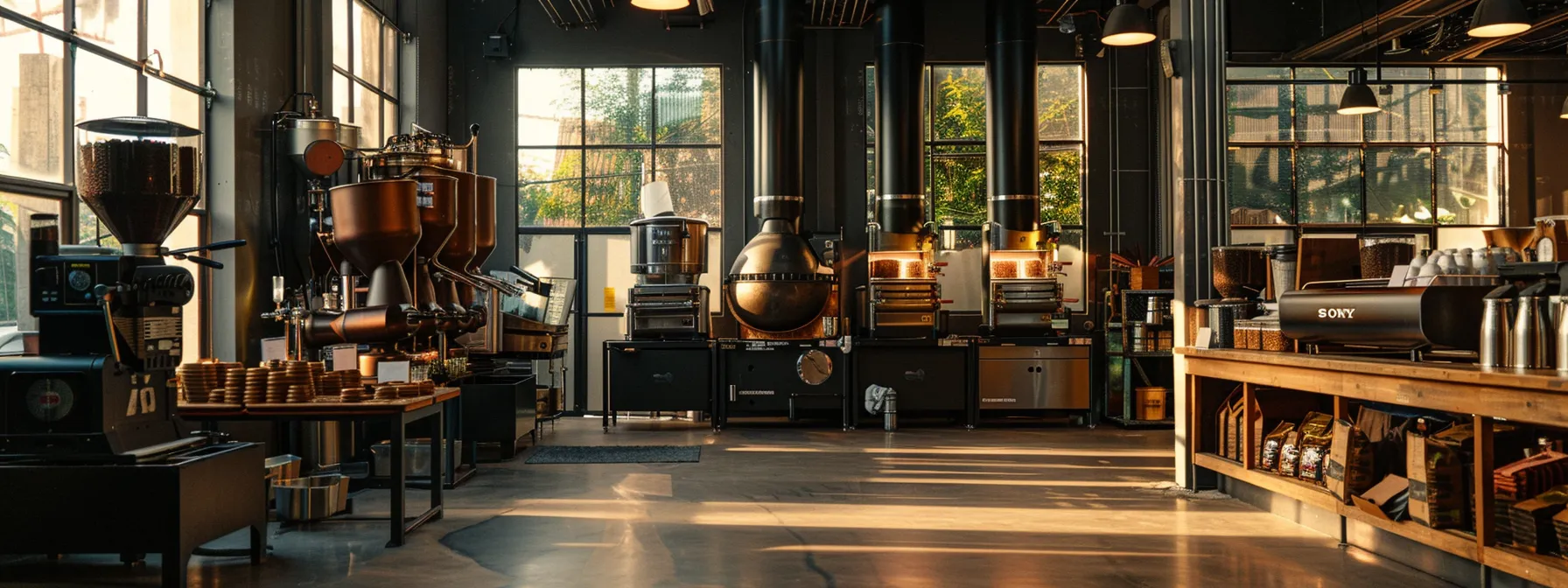
As I delve into the world of commercial coffee roasters, I’m faced with a variety of options that can significantly impact my roasting process and the final taste of my coffee. From the classic drum roasters powered by natural gas to the innovative fluid bed air roasters, each type offers unique advantages for my small business. I must consider the level of automation that best suits my operation, whether it’s a hands-on manual approach or a fully automatic system that ensures consistency for my customers. Additionally, selecting the right size and capacity is crucial to match my current production needs while allowing room for growth. By carefully evaluating these factors, I can choose a roaster that aligns perfectly with my business goals and coffee quality standards.
Drum vs. Air Roasters – Pros and Cons
I’ve found that drum roasters offer excellent heat retention and produce a well-rounded flavor profile, making them a popular choice for my coffee cart business. Their ability to handle larger batch sizes makes them a smart investment for my growing operation. However, I must consider that drum roasters can be more challenging to clean and maintain, potentially impacting my bottom line.
On the other hand, air roasters have caught my attention with their precise temperature control and shorter roast times, which could benefit my marketing efforts for fresh, quickly roasted beans. These roasters often feature stainless steel components, ensuring durability and ease of cleaning. While they may require a higher initial investment, the consistency they provide could help my baristas deliver a superior cup every time.
Automation Level – Manual, Semi-Automatic, or Fully Automatic
I carefully consider the automation level when selecting a commercial coffee roaster for my small business. Manual roasters give me complete control over the roasting process, allowing me to fine-tune each batch for my drip coffee offerings. However, they require more skill and attention, which could impact my insurance costs due to increased risk. Semi-automatic roasters offer a balance, providing some automated features while still allowing me to adjust airflow and temperature as needed.
Fully automatic roasters have caught my eye for their consistency and ease of use, especially when using propane as a fuel source. These machines can replicate my preferred roast profiles with minimal intervention, freeing up my time to focus on other aspects of my business. While they come with a higher upfront cost, the long-term benefits in terms of efficiency and consistent quality make them an attractive option for my growing operation.
Size and Capacity Options for Small Businesses
I carefully consider the size and capacity options when selecting a commercial coffee roaster for my small business. Smaller roasters, typically ranging from 1-5 kg, offer flexibility for my specialty coffee shop, allowing me to roast in small batches with precise control. These compact machines often come with advanced features like touchscreen interfaces and data loggers, which help me monitor and replicate successful roasts.
For my growing operation, I’m exploring larger capacity roasters in the 10-15 kg range, which can handle increased production demands. These models often incorporate liquid cooling systems and afterburners to manage emissions, making them suitable for urban manufacturing locations. By choosing the right size, I ensure efficient roasting while maintaining the quality that sets my coffee apart in the market.
Mastering commercial coffee roasters is just the beginning. Now, let’s explore the heart of exceptional coffee: roast quality and consistency.
The Importance of Roast Quality and Consistency
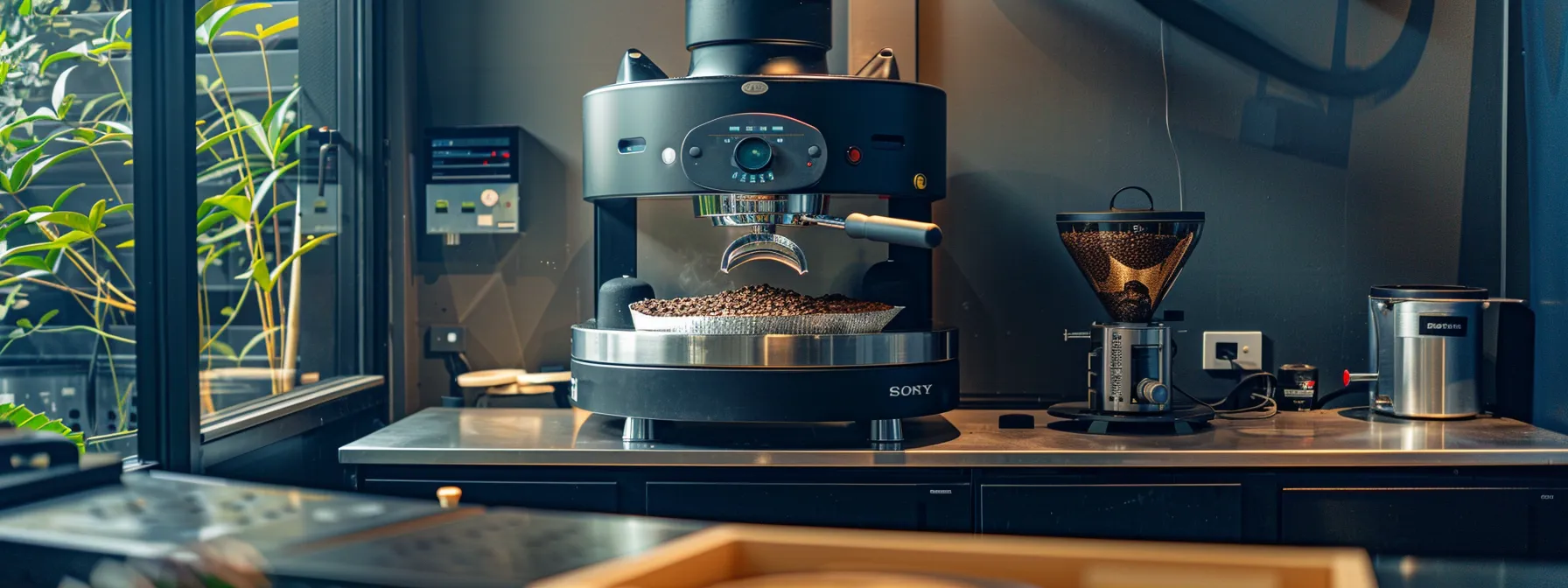
I understand that achieving consistent roast profiles is crucial for my coffee business’s success. The roaster’s technology plays a pivotal role in my ability to deliver a uniform experience to my customers. From the precise control of the flame to the integration of computer systems, modern roasters offer a range of features that enhance quality control. I’ve found that roasters with advanced heating elements and programmable software, some even utilizing JavaScript, can help me maintain the exacting standards my customers expect. By leveraging these technological advancements, I can ensure that each batch of coffee meets my rigorous quality benchmarks, regardless of who’s operating the roaster.
Evaluating Roaster Technology for Consistent Roast Profiles
When evaluating roaster technology for consistent roast profiles, I focus on finding the best coffee roaster machine commercial options that offer precise temperature control and data logging capabilities. These features are crucial for maintaining the consistency my customers expect, whether I’m using a small coffee roaster machine for my business or considering an industrial coffee roaster for larger operations. I look for roasters with advanced PID controllers and real-time temperature monitoring to ensure each batch meets my exacting standards.
I also consider commercial roasters with programmable roast profiles and automated systems that can replicate my preferred roast curves. These technologies allow me to achieve consistent results across different batches and even different operators, which is essential for scaling my business. By investing in a roaster with robust software and connectivity options, I can fine-tune my roasts and maintain quality control as my production volume grows.
Here’s a comparison of roaster technologies I consider for consistent profiles:
The Role of Software and Programmability in Quality Control
I rely heavily on software and programmability features in my commercial coffee roaster to maintain consistent quality control. These advanced systems allow me to create and store precise roast profiles, ensuring that I can replicate my best roasts time after time. By utilizing roast curve tracking and real-time data logging, I can fine-tune my processes and make informed decisions during each roasting session.
The integration of programmable features in my roaster has revolutionized my quality control efforts. I can now set parameters for different bean varieties and roast levels, which helps me achieve consistent results even when working with new or challenging coffee origins. This level of control is essential for my business, as it allows me to:
- Maintain flavor consistency across batches
- Experiment with new roast profiles safely
- Train new staff more effectively
- Adapt quickly to changes in bean quality or environmental conditions
Achieving consistent, high-quality roasts is just the beginning of your coffee roasting journey. Let’s explore the crucial next step: setting up the perfect space for your roasting operation.
Evaluating the Space and Ventilation Requirements
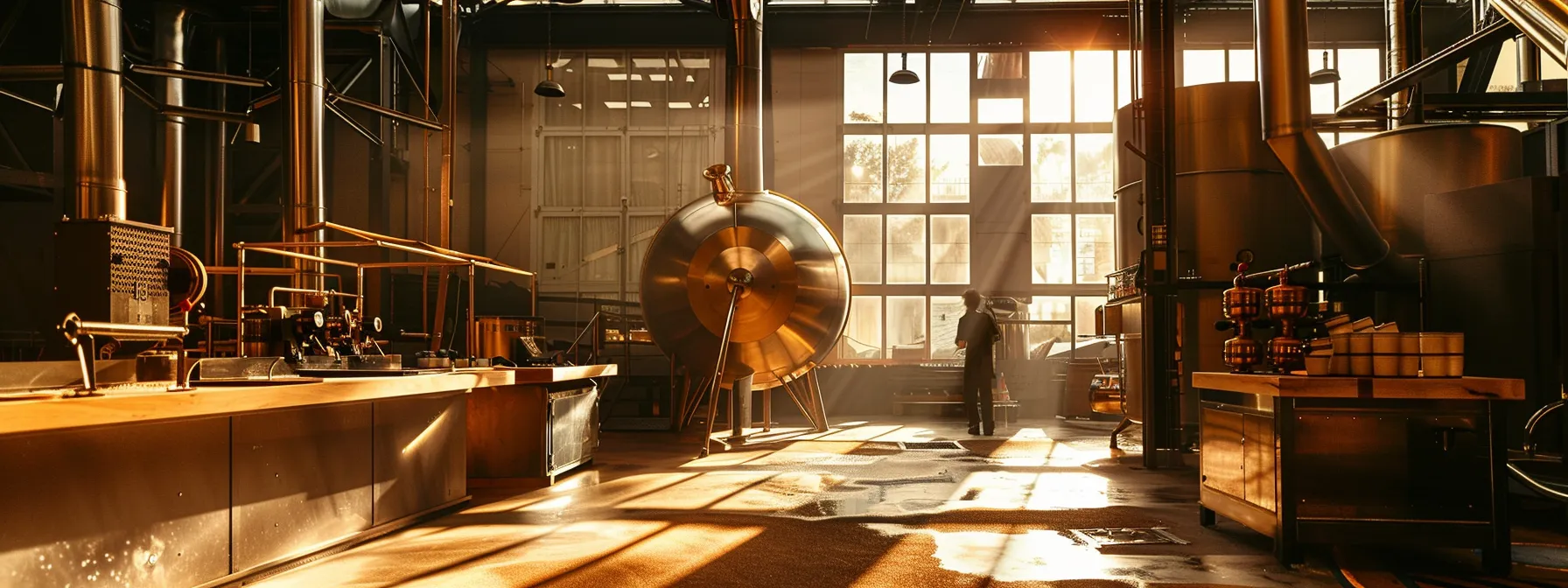
I carefully consider the spatial and ventilation requirements when selecting a commercial coffee roaster for my small business. The right setup ensures not only efficient operations but also compliance with local regulations and safety standards. I evaluate the available floor space in my roastery, taking into account the roaster’s footprint and additional room needed for bean storage, cooling trays, and operator movement. Simultaneously, I assess the ventilation needs of different roaster models, considering factors like heat output, smoke production, and chaff collection. By addressing these aspects early in the planning process, I can create an optimal roasting environment that promotes both quality production and workplace safety.
Space Planning for Your Coffee Roasting Area
I carefully plan the layout of my coffee roasting area to maximize efficiency and safety. I consider the flow of operations, from green bean storage to roasting and packaging, ensuring smooth transitions between each stage. This includes allocating space for my commercial coffee roaster, cooling trays, and quality control stations.
When designing my roasting space, I factor in the dimensions of different commercial coffee roaster models I’m considering. I ensure there’s adequate clearance around the machine for maintenance access and operator movement. Here’s a breakdown of the space requirements I consider for different roaster sizes:
Understanding Ventilation Needs and Solutions
I carefully assess the ventilation requirements for my commercial coffee roaster to ensure a safe and compliant operation. This involves calculating the heat output and smoke production of the roaster, as well as considering local regulations regarding air quality and emissions. I factor in the need for a robust exhaust system that can handle the volume of air and particulates generated during the roasting process.
To address these ventilation needs, I explore various solutions such as high-capacity exhaust fans, afterburners for smoke reduction, and advanced filtration systems. I also consider the placement of vents and ducts to optimize airflow and minimize the impact on my workspace temperature. By investing in proper ventilation, I not only maintain a comfortable working environment but also protect my equipment and ensure the quality of my roasted coffee.
With our space and ventilation sorted, let’s tackle the next crucial step. Budgeting for your commercial coffee roaster can make or break your roasting dreams, so let’s crunch some numbers.
Budgeting for Your Commercial Coffee Roaster
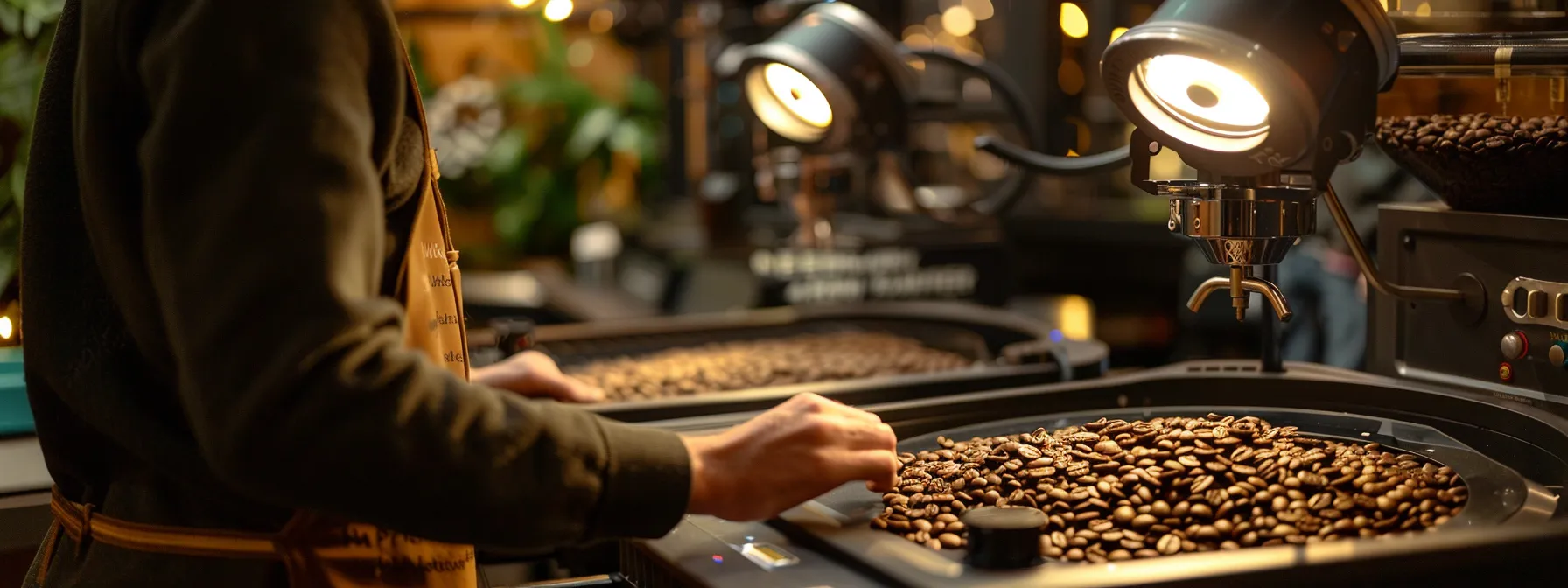
Investing in a commercial coffee roaster requires careful financial planning. I consider both the immediate costs and the long-term value to ensure I make a sound decision for my small business. By analyzing the upfront expenses against potential returns, I can determine the most cost-effective option that aligns with my business goals. Additionally, I explore various financing alternatives tailored for small businesses, weighing the pros and cons of each to find the most suitable way to fund my roaster purchase. This strategic approach helps me balance my budget constraints with the need for quality equipment that will drive my business forward.
Upfront Costs vs. Long-Term Value
I carefully weigh the upfront costs against the long-term value when selecting a commercial coffee roaster for my small business. While higher-end models come with a steeper initial price tag, they often offer advanced features like precise temperature control and programmable roast profiles that can significantly improve my coffee quality and consistency over time.
I consider factors such as energy efficiency, durability, and maintenance requirements when evaluating the long-term value of a roaster. A more expensive machine with better build quality and lower operating costs may prove more economical in the long run, especially as my business grows and production volumes increase.
Financing Options and Considerations for Small Businesses
I explore various financing options to fund my commercial coffee roaster purchase, considering both traditional and alternative sources. I evaluate bank loans, equipment leasing, and Small Business Administration (SBA) loans, weighing their interest rates, terms, and qualification requirements against my business’s financial health and growth projections.
I also consider crowdfunding platforms and partnerships with local investors as potential financing avenues for my roaster acquisition. These options can provide additional benefits beyond capital, such as community engagement and potential customer base expansion, which align well with my small business ethos and long-term growth strategy.
The quest for your ideal commercial coffee roaster doesn’t end with budget considerations. Energy efficiency and sustainability play crucial roles in shaping the future of your roasting business.
The Significance of Energy Efficiency and Sustainability
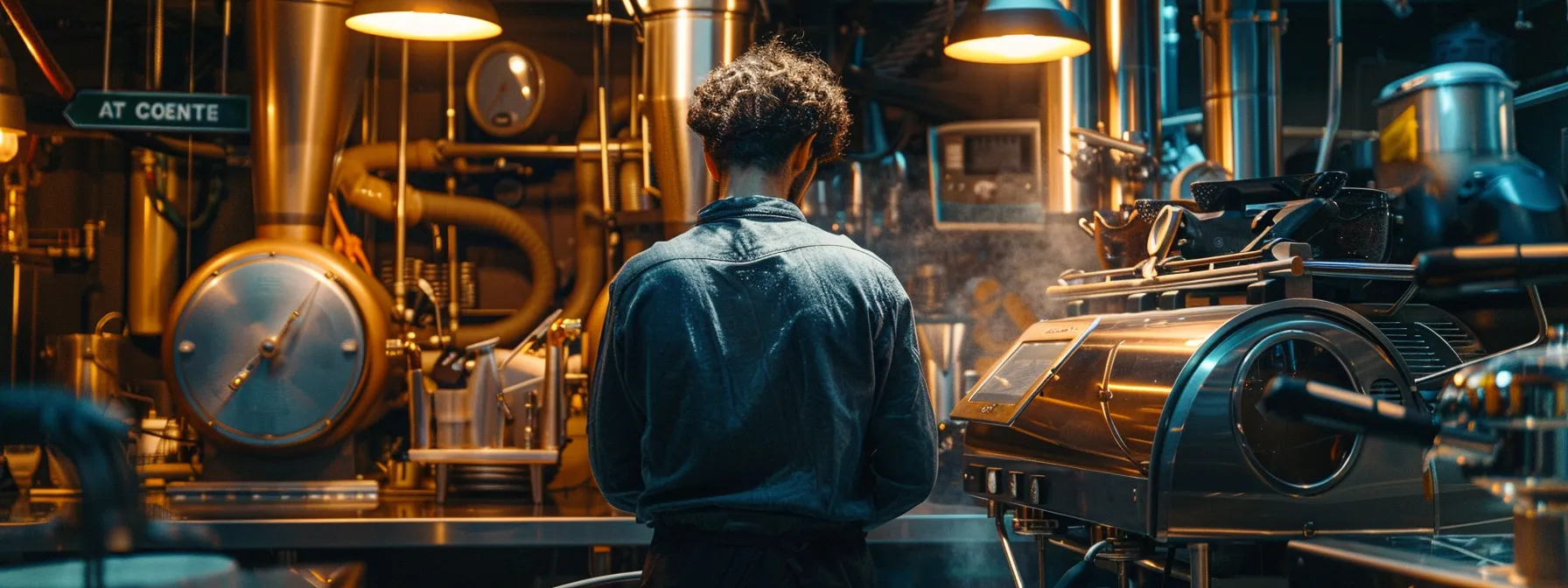
I prioritize energy efficiency and sustainability when selecting a commercial coffee roaster for my small business. These factors not only impact my operational costs but also align with my commitment to environmentally responsible practices. By comparing the energy consumption of different roaster types, I can make an informed decision that balances performance with efficiency. Additionally, I recognize that implementing sustainable roasting practices can significantly influence my business’s reputation and appeal to environmentally conscious consumers. This approach not only helps me reduce my carbon footprint but also positions my brand as a responsible player in the coffee industry.
Energy Consumption of Different Roaster Types
I carefully evaluate the energy consumption of different roaster types to make an informed decision for my small business. Drum roasters, while typically more energy-intensive due to their larger thermal mass, offer excellent heat retention and can be more efficient for larger batch sizes. In contrast, fluid bed roasters generally consume less energy but may require longer roasting times for certain bean varieties.
To optimize energy efficiency, I consider roasters with advanced heat recycling systems and precise temperature controls. These features allow me to minimize energy waste and maintain consistent roast quality. When comparing roaster options, I look at the following factors to assess their energy efficiency:
- Insulation quality and heat retention capabilities
- Energy source options (gas, electric, or hybrid systems)
- Programmable power management features
- Batch size flexibility to match production needs
- Energy consumption data and efficiency ratings
Sustainable Roasting Practices and Their Business Impact
I implement sustainable roasting practices to reduce my environmental impact and appeal to eco-conscious consumers. By investing in energy-efficient equipment and adopting waste reduction strategies, I minimize my carbon footprint while potentially lowering operational costs. These practices also allow me to differentiate my brand in a competitive market, attracting customers who value environmentally responsible businesses.
I’ve found that sustainable roasting practices can significantly impact my business’s bottom line. By showcasing my commitment to sustainability through certifications and transparent sourcing, I build trust with customers and often command premium prices for my coffee. This approach has also opened doors to partnerships with like-minded businesses and increased my market share among environmentally aware consumers.
Sustainability fuels our passion, but let’s shift gears to protect your investment. Discover how robust warranties and expert support keep your roaster running smoothly for years to come.
Warranty, Maintenance, and Support Essentials
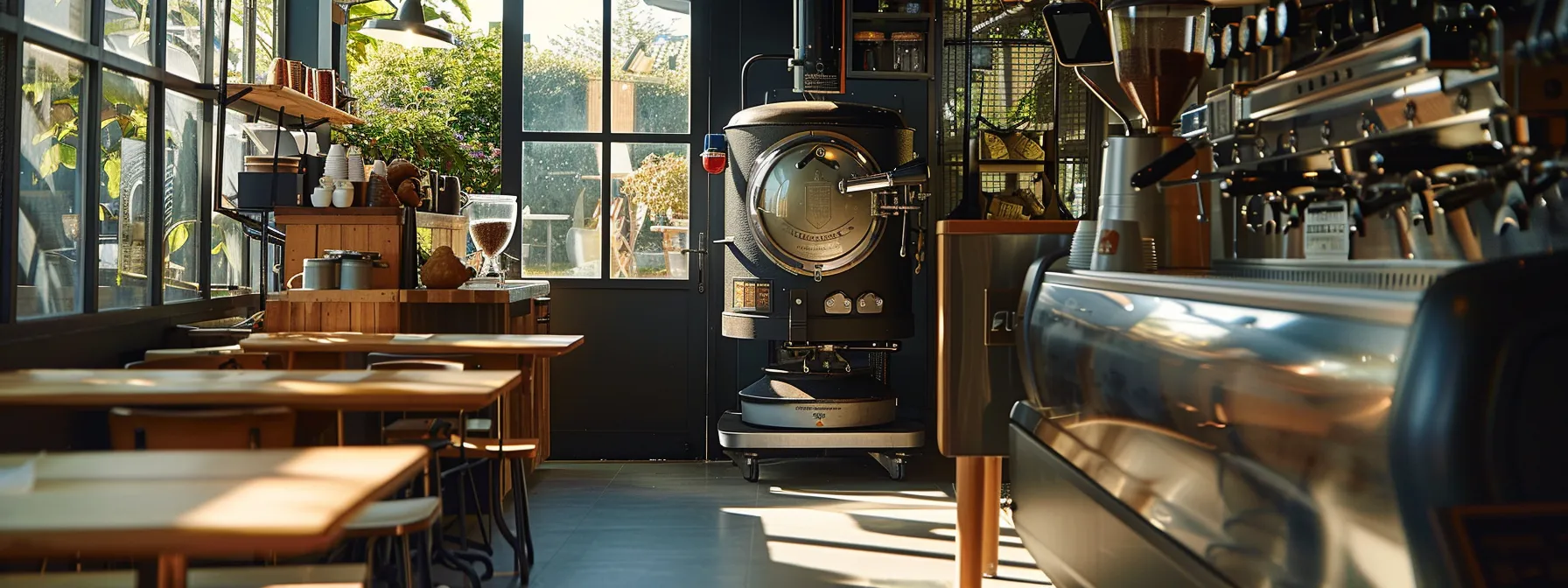
I prioritize warranty coverage, maintenance requirements, and support services when selecting a commercial coffee roaster for my small business. These factors significantly impact the long-term reliability and cost-effectiveness of my investment. By thoroughly comparing warranty policies, I can ensure protection against potential defects or malfunctions. Additionally, understanding the maintenance needs and availability of support services helps me plan for ongoing care and minimize downtime. This proactive approach allows me to focus on roasting quality coffee while maintaining the longevity of my equipment.
Comparing Warranty Policies and What They Cover
I carefully examine warranty policies when selecting a commercial coffee roaster, focusing on coverage duration, parts included, and service terms. I prioritize warranties that offer comprehensive protection for critical components like heating elements, motors, and control systems, as these can be costly to replace. Additionally, I look for policies that include on-site service or expedited parts shipping to minimize potential downtime for my roasting operation.
I compare the fine print of different warranty offerings, paying attention to exclusions and conditions that might limit coverage. Some manufacturers provide extended warranty options or maintenance agreements, which I evaluate based on their cost-effectiveness and the level of support they offer. By thoroughly understanding these policies, I can make an informed decision that balances upfront costs with long-term protection for my investment.
Maintenance Needs and Support Services Availability
I prioritize understanding the maintenance needs and support services available for my commercial coffee roaster. Regular cleaning, calibration, and part replacements are essential to keep my roaster operating at peak performance. I research the manufacturer’s recommended maintenance schedule and ensure I have access to necessary tools and replacement parts.
The availability of reliable support services is crucial for minimizing downtime and addressing any issues that arise. I look for roaster manufacturers that offer comprehensive support, including:
- 24/7 technical assistance hotlines
- Remote diagnostics capabilities
- Rapid response on-site service options
- Training programs for proper maintenance and operation
- Access to a network of certified technicians in my area
Explore real-world experiences to guide your decision. Let’s dive into what other roasters say about their equipment choices.
Reading Reviews and Seeking Recommendations

I recognize the value of real-world experiences when choosing a commercial coffee roaster for my small business. By seeking out and carefully analyzing reviews from fellow small business owners, I gain invaluable insights into the performance, reliability, and user experience of different roaster models. Additionally, I tap into the wealth of knowledge within the coffee roasting community, engaging with experienced roasters through forums, trade shows, and local meetups. This approach allows me to gather diverse perspectives, learn about potential challenges, and discover innovative solutions that can help me make an informed decision tailored to my specific roasting needs.
Finding and Interpreting Reviews From Other Small Business Owners
I scour online platforms, industry forums, and social media groups dedicated to coffee roasting to find reviews from fellow small business owners. By focusing on experiences shared by those with similar production scales and business models, I gain relevant insights into how different roasters perform in real-world scenarios.
When interpreting these reviews, I pay close attention to comments about reliability, consistency, and customer support. I look for patterns in feedback across multiple sources, weighing both positive and negative experiences to form a balanced view of each roaster model I’m considering.
Leveraging Coffee Roasting Community Insights and Experiences
I actively engage with the coffee roasting community to gather insights and experiences that inform my decision-making process. By attending industry events, participating in online forums, and connecting with local roasters, I gain valuable perspectives on different commercial coffee roaster models and their performance in real-world settings. These interactions often reveal practical tips and tricks that aren’t found in product manuals or marketing materials.
I’ve found that experienced roasters are often willing to share their knowledge about equipment reliability, maintenance challenges, and unexpected benefits of certain features. By leveraging these community insights, I can make a more informed decision that aligns with my business goals and roasting philosophy. This approach has helped me avoid potential pitfalls and discover innovative solutions that enhance my roasting operations.
The journey from research to reality quickens your pulse. With your roaster chosen, anticipation builds for the transformative moments ahead.
Preparing for Installation and Training
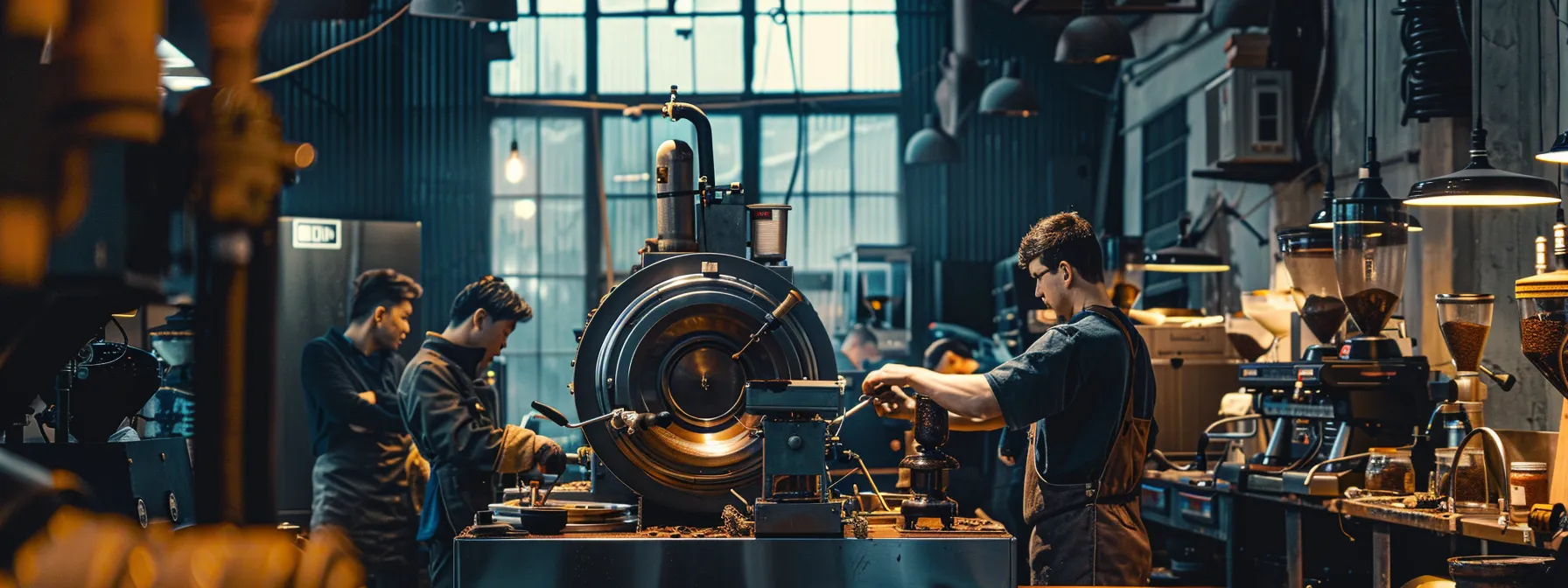
As I prepare to integrate a new commercial coffee roaster into my small business, I recognize the importance of a smooth installation process and comprehensive training for my team. Understanding what to expect during installation helps me plan and minimize disruption to my operations. Simultaneously, exploring various training options ensures that my staff and I can fully leverage the roaster’s capabilities from day one. By focusing on these aspects, I set the foundation for efficient and effective coffee roasting that aligns with my business goals and quality standards.
What to Expect During the Installation Process
I prepare my space for the arrival of the new commercial coffee roaster by ensuring proper electrical and gas connections are in place. Before the installation team arrives, I clear the designated area, removing any obstacles that might impede the process. This preparation helps streamline the installation and reduces potential delays.
During the installation, I expect the technicians to carefully position the roaster, connect it to power and fuel sources, and calibrate all systems for optimal performance. I plan to be present throughout the process to address any questions and gain insights into the roaster’s setup, which will be valuable for future maintenance and troubleshooting. The installation typically concludes with a test run to ensure all components are functioning correctly.
Training Options for You and Your Team on Using the Roaster
I explore various training options to ensure my team and I can effectively operate our new commercial coffee roaster. These include on-site training provided by the manufacturer, online courses focused on roasting techniques, and hands-on workshops offered by industry experts. By investing in comprehensive training, I aim to maximize our roaster’s potential and maintain consistent quality across our coffee production.
I also consider ongoing education opportunities to stay updated on the latest roasting trends and techniques. This involves attending industry conferences, participating in cupping sessions with experienced roasters, and utilizing any available resources from the roaster manufacturer, such as webinars or technical support hotlines. Through continuous learning, I ensure that my team remains skilled and adaptable in our roasting practices.
Conclusion
Selecting the ideal commercial coffee roaster for your small business is a crucial decision that impacts product quality, operational efficiency, and long-term success. By carefully evaluating factors such as roast quality, energy efficiency, and maintenance requirements, you can choose a roaster that aligns with your business goals and budget constraints. Investing in proper training and understanding installation processes ensures you maximize the potential of your new equipment from day one. Ultimately, the right roaster will not only meet your current production needs but also support your business’s growth and sustainability in the competitive coffee industry.


